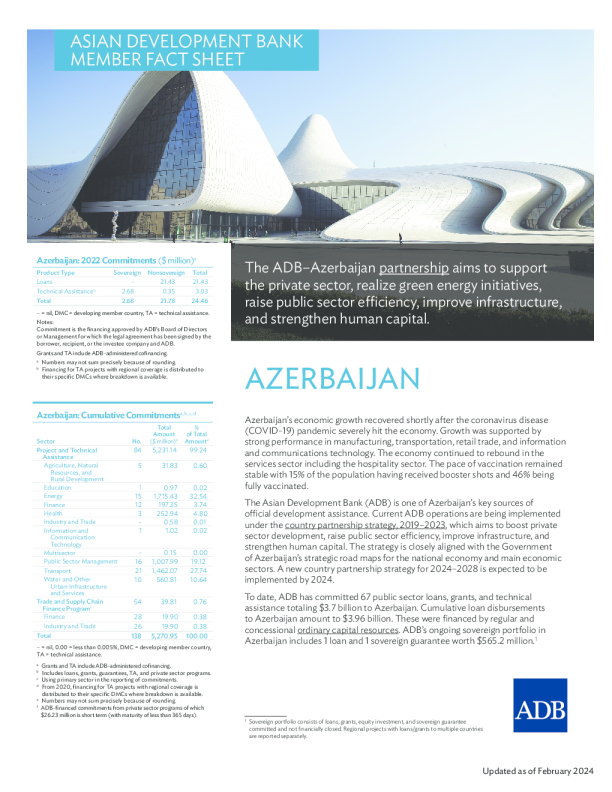阿塞拜疆能源概况
 AI智能总结
AI智能总结Azerbaijan Energy Profile
Overview
- Geography and Population: Located in the southern Caucasus region, Azerbaijan borders the Caspian Sea, Armenia, Georgia, Russia, and Iran. With a population of approximately 10.1 million, the country covers about 86,600 square kilometers, with Baku serving as the capital.
- Economic Transformation: Since gaining independence in 1991, Azerbaijan has experienced significant economic changes driven by its large oil and gas reserves, leading to strong growth in the 1990s and 2000s. However, reliance on these industries has made the economy vulnerable to oil price volatility. Growth averaged 1.4% per year from 2013 to 2017, compared to 5.5% from 2008 to 2012.
- Recent Economic Recovery: Despite a contraction of 4.3% in 2021 due to the COVID-19 pandemic, the economy recovered quickly. Manufacturing, transportation, retail trade, and information and communication technologies sectors supported this recovery. Oil and gas continue to dominate exports, accounting for over 90%.
- Energy Sector: The energy sector remains predominantly government-owned, with only a few small hydropower plants in private ownership. Major energy sources include oil, natural gas, and electricity. Azerbaijan’s renewable energy potential is considerable but practical deployment has been limited.
Key Energy Data
- Production:
- Oil: Annual production has fluctuated, with a peak of 50.9 million tonnes in 2010 and a low of 37.5 million tonnes in 2020.
- Natural Gas: Production has steadily increased, reaching a record 32.6 billion cubic meters (bcm) in 2021.
- Electricity: Generation has grown significantly, reaching 27.8 terawatt-hours (TWh) in 2021.
- Demand: Total energy supply (TES) was 16.1 million tonnes of oil equivalent (Mtoe) in 2022.
- Consumption:
- Final Consumption (TFC): In 2021, TFC excluding the transformation sector was 11.5 Mtoe.
- Sectoral Breakdown: The residential sector had the largest final consumption at 4.1 Mtoe, followed by transport at 2.6 Mtoe.
- Energy Sources: Natural gas and oil products accounted for 43% and 39% respectively, while electricity contributed 15%.
Renewable Energy
- Contribution: Renewable energy sources, including hydro, contributed 1.5% to total energy supply.
Energy Security and Diversification
- Self-Sufficiency: Azerbaijan has one of the world's highest energy self-sufficiency ratios, with production exceeding demand almost four times.
- Import and Export: The country is a major exporter of both crude oil and natural gas, with exports of 26.6 million tonnes and 22.6 bcm respectively in 2022.
Overall, Azerbaijan's energy landscape is heavily reliant on oil and gas, with significant potential for renewable energy development.





